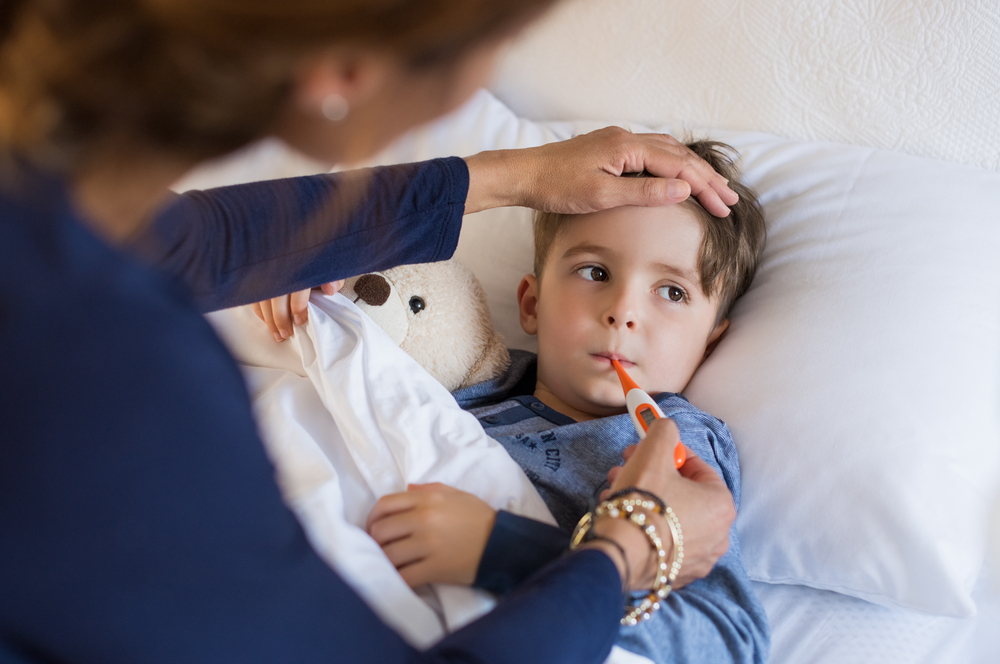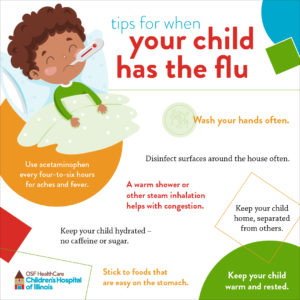
What to do if your child is sick with flu
Flu in kids carries many similarities to flu in adults, though there are symptoms that are more common in children with flu than in adults.
Mohammed S. Khan, MD, is a primary care physician at OSF HealthCare. He treats the flu every year, and he shares his expertise on flu season and how to respond.
The first step is to prevent the influenza virus from infecting your child by getting them a flu shot every fall if they are older than six months.
Does your child have the flu?
During flu season, there are typically “a lot of things going around,” Dr. Khan said. Common colds and other respiratory viruses spread as people spend more time indoors during the cold months of winter.
So how do you know if what your child has is the flu?

While the common cold progresses gradually with a runny nose or congestion, the flu tends to hit hard with symptoms like fever, chills and body aches – even vomiting or diarrhea.
How long does the flu last in kids?
As with adults, flu in kids can last anywhere from one day to a whole week. If your child has received the flu vaccine, there is a chance the illness will not be as severe or last as long.
Once your child has been free of fever for 24 hours without fever-reducing medications like acetaminophen, they can safely return to regular life without risk of spreading the flu to others.
Flu treatment for kids
If your child has the flu, Dr. Khan recommends:
- Keep your child home and at least six feet away from others.
- Disinfect surfaces around your child as much as possible to prevent spreading the virus.
- Wash your hands after being near your child.
- Keep your child hydrated with plenty of water.
- Try to feed your child foods that are easy on the stomach.
- Give your child acetaminophen every four-to-six hours for aches and fever.
- Try to keep your child warm and rested.
- Give your child a warm shower or another form of steam inhalation to help with congestion.
If the symptoms are getting worse, get your child in to see their health care provider.
Toddler flu treatment
It’s not too late to get your child the flu shot
If your child is 2 or younger, they are considered high-risk for complications or severe illness. That means you need to get your child in to see a doctor within the first two days of infection to see if antiviral medications are needed.